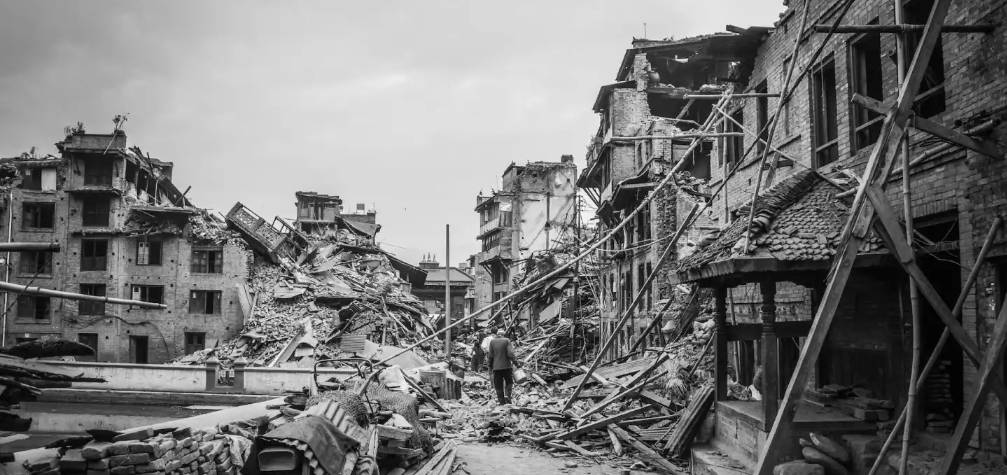Assessing Risk: How Natural Disasters Impact Real Estate
6 min read
24 May 2025
Natural disasters, ranging from hurricanes and wildfires to earthquakes and floods, exert a profound influence on the real estate market. As the consequences of climate change intensify, with these events becoming more frequent and severe, comprehending and assessing risk becomes pivotal for both buyers and sellers. In this comprehensive article, we delve into the multifaceted ways in which natural disasters affect real estate. From property values to insurance considerations, and from resilient building practices to investment strategies, we navigate the strategies for mitigating risk in an increasingly unpredictable real estate environment.
Property Values and Market Trends
Natural disasters wield considerable sway over property values and market trends. Homes situated in regions prone to such calamities may experience diminished demand and subsequently reduced resale value due to perceived risks. Conversely, properties located in safer areas may witness heightened demand and augmented prices. Real estate markets demonstrate dynamic responsiveness to the threat of natural disasters, necessitating vigilance and ongoing awareness of local risk factors among buyers and sellers alike.

Insurance Costs and Availability
The financial impact of natural disasters extends to insurance costs and availability, directly affecting homeowners and investors. In locales with a history of natural disasters, insurance premiums tend to surge significantly, resulting in higher homeownership expenses. Moreover, properties situated in high-risk zones may encounter challenges in obtaining insurance coverage, presenting considerable hurdles for prospective buyers. Therefore, it is imperative for individuals in disaster-prone regions to meticulously explore insurance options and gain an in-depth understanding of the associated expenses.
Resilient Building Practices
In the quest to mitigate the impact of natural disasters, resilient building practices have assumed heightened importance within the real estate sector. These practices encompass constructing or retrofitting properties to withstand various disasters, such as hurricanes, earthquakes, and wildfires. Resilient homes possess an intrinsic appeal to buyers owing to the additional protection they offer. Furthermore, governments and organizations are actively incentivizing the adoption of resilient building techniques, thereby contributing to the creation of safer communities.
Regulatory Changes and Zoning Laws
Natural disasters frequently catalyze regulatory changes and the revision of zoning laws in affected regions. These transformations can exert substantial influence on property use, development prospects, and building codes. To minimize risk and ensure compliance, it is essential for buyers and investors to remain well-informed about local regulations. This knowledge pertains to the feasibility and safety of real estate projects and is integral to making informed decisions in an evolving landscape shaped by natural disasters.
Investment Strategies
Real estate investors are compelled to adapt their strategies in light of the looming threat of natural disasters. Diversifying portfolios across regions characterized by varying risk profiles offers a prudent means of risk dispersion. Furthermore, investors should evaluate the long-term resilience of the properties they acquire. Investing in disaster-resilient real estate emerges as a judicious choice, as it can yield stability and security amid a climate that continues to undergo profound transformations.
Community Preparedness and Mitigation
Community preparedness and mitigation initiatives occupy a pivotal role in the management of natural disaster risk within the real estate sector. Communities that channel resources into disaster preparedness and bolster infrastructure resilience inherently become more appealing to buyers and investors alike. Potential buyers are encouraged to consider the disaster resilience of communities they contemplate joining. Elements such as evacuation plans, flood control mechanisms, and the availability of emergency services all bear significance in determining a community's readiness to face potential disasters.
Conclusion: Navigating an Uncertain Terrain
Natural disasters constitute an undeniable and escalating facet of contemporary existence, profoundly impacting the real estate arena. In this ever-shifting landscape, it falls upon buyers, sellers, and investors to navigate with unwavering vigilance and meticulous awareness. Through the conscientious assessment of risk, the exploration of insurance alternatives, the embrace of resilient building practices, and the scrupulous monitoring of local regulations, individuals can make judicious real estate decisions in the face of an environment characterized by unpredictability and transformation. The real estate domain will persist in adapting to the challenges posed by natural disasters and climate change, urging individuals to adopt proactive measures to construct a resilient and secure future.


